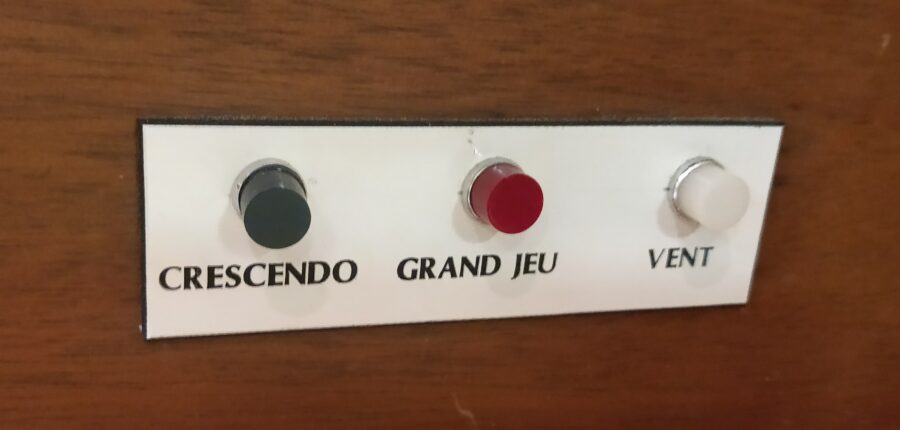
Published May 19, 2023
When the Sacred Echoes Art (and vice versa)
[my footsteps resonate in the chapel… Choreographers Anonymous are meeting in a church today to talk about the Sacred in their practices … wow! it’s wild how this space was conceived of as an actual soundbox…]
As soon as you enter a space, you encounter it. Going to a performance is participating in a celebration. The audience respects a tacit agreement that leads towards collective communion, and sometimes even a state of grace.
[when I was young, sunshine rays piercing through clouds signalled divine presence to me…]
I associated the Sacred with poetry – a singular space beyond function. My assigned role as an artist is to activate a vector for poetry in the way that others till the soil or work the mines.
[…during our spatial exploration, I lay on the altar and I could suddenly access the sky…]
The following definition of ritual echoes the work of choreography: “Rituals are bodily, performative, symbolic […] They are repetitive, homogenous, they express a rite of passage, a threshold, they are playful and operational in nature” (Wulf et Gabriel, 2005). In ancestral traditions, spirituality was lived through art to welcome a child into the world or accompany someone crossing the great divide.
[I remember touching on states of trance or communion in my group dance experiences]
The Sacred holds questions of sharing. Contemporary Western society lacks the ritualistic times and spaces for initiation and contemplation. Is the sacred a societal glue?
[the song from my first communion spontaneously came back to me as I walked down the central aisle…]
All my performances are rituals. Sombre masses, celebrations, parties, collective rituals, rites of passage in relation to feats of endurance or trance states provoked by repeating gestures… Do you (still) have a ritual before taking the stage?
[it’s strange – even though I am not a believer, I always whisper when I find myself in a church…]
The Sacred is related to power. Art has historically represented embodied sacredness. Commissioned by the church, art served the clergy. How does a democracy fund art? What ideal (and who) does it serve?
[the power of religion is to assign a person to orchestrate a ritual. Liturgical staging tells us when to rise, sit or kneel]
The miracle of religion is basically to defer and confer our capacity to act to God. In a ritual and with the Sacred, you give yourself the means to go beyond yourself and explore new grounds to actualize a project dear to your heart. The creative act has the power to redesign reality. This performative power is transformational.
[the central aisle of this church has witnessed many events: baptisms, communions, marriages, funerals…]
I associate rituals with gestures that bring us back to ourselves. During a creative process, I offered that everyone bring a significant object and place it on a piece of fabric. Each person took the time to set their object down in silence. This corner of the studio became charged with a particular energy.
[The space is dark along the stages of the cross … we feel the weight of Guilt]
We are constrained by certain imperatives in the religion of Art – even by a certain mysticism (glorious bodies, demiurge makers, special effects…). What would an atheist dance look like? I am looking to desacralize dance with a capital “D.” Strangely, removing the artifice from bodies on stage doesn’t take away from the magic or emotions at play. Paradoxically, stripping away allows us touch on something sacred: the human…
[we enter this religious space with ignorance or fantasies…]

Mythology is foundational. The human capacity is to create fiction. It’s wonderfully troubling. We can rework our fictions to reorganize power. When you desacralize, you write a new story.
[I never knew what to say at confession…]
When we desacralize, we chose to make sacred elements that weren’t (sacred enough): nature, our relation to the other, smallness… We pay attention to what was considered insignificant.
[I am intrigued by three small buttons on the organ: a green one labelled “crescendo,” a red one labelled “big game,” and a white one labelled “wind”…]
The theatre is dense with codes that serve a function. Choreography is created in relationship to site. If you change spaces, you rewrite history.
Writings freely composed by Katya Montaignac based on a spatial exploration of the Chapelle des Hospitalières and a Choreographers Anonymous discussion on “The Question of the Sacred in Creation” held together during Milan Gervais’ research residency December 14, 2022.
These snippets compiled into a fictitious diary are elliptical and subjective. The “I” embodies different voices without aiming to faithfully represent a collectivity.

©Drawing and photos by Katya Montaignac
Text translations from French by Marie-Claire Forté
